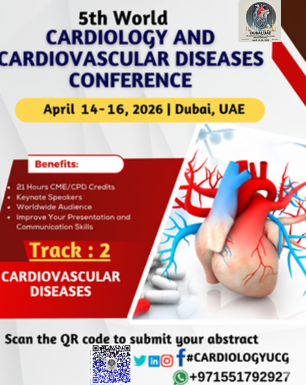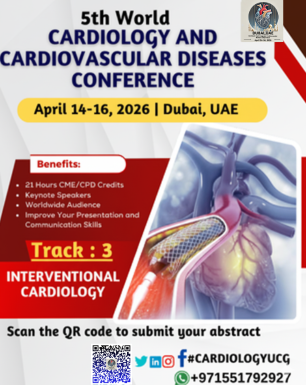Some Sub topics of nuclear-cardiology:
Myocardial Perfusion Imaging (MPI), Assessment of Myocardial Viability, Coronary Artery Disease (CAD) Diagnosis, Cardiac PET Imaging, Quantification of Left Ventricular Function, Assessment of Heart Failure, Risk Stratification,
The Field of nuclear-cardiology Informatics:
Nuclear Cardiology Informatics is an emerging interdisciplinary field that integrates advanced information technology with nuclear cardiology to enhance the quality, efficiency, and accuracy of cardiac imaging and diagnosis. It focuses on the management, analysis, and interpretation of nuclear cardiology data using sophisticated computational tools, artificial intelligence (AI), and machine learning (ML). By leveraging digital technologies, it aims to improve patient outcomes, streamline workflows, and enable personalized treatment plans. Here’s a breakdown of the key aspects and applications of Nuclear Cardiology Informatics:
1. Data Management and Integration
- Centralized Data Repositories:
- Creating centralized
databases for storing patient data, imaging results, and diagnostic
reports from nuclear cardiology studies. This allows for efficient data
retrieval and management.
- Integration with Electronic Health Records
(EHRs):
- Seamless integration of
nuclear cardiology data with EHRs, enabling cardiologists and healthcare
providers to access comprehensive patient profiles, imaging results, and
treatment history in one place.
- Data Standardization:
- Standardizing imaging data
formats and medical records using protocols like DICOM (Digital Imaging
and Communications in Medicine) to ensure consistency across platforms
and institutions.
2.
Advanced Image Processing and Analysis
- Automated Image Analysis:
- Using AI algorithms and
machine learning models to automatically analyze nuclear cardiology
images (e.g., SPECT or PET scans). This can include detecting myocardial
perfusion defects, quantifying left ventricular ejection fraction (LVEF),
and identifying regions of ischemia or infarction.
- Quantitative Imaging:
- Advanced computational
techniques are used to extract quantitative measurements from nuclear
images, such as myocardial blood flow, regional wall motion, and
metabolic activity, aiding in more accurate diagnostics and personalized
treatment planning.
- Image Fusion:
- Combining nuclear imaging
(e.g., PET or SPECT) with other imaging modalities like CT or MRI to
enhance image quality, provide better anatomical localization, and
improve diagnostic accuracy (e.g., PET/CT or SPECT/CT fusion).
3.
Artificial Intelligence (AI) and Machine Learning (ML) Applications
- AI for Predictive Analytics:
- Machine learning models can
be trained to analyze vast amounts of nuclear cardiology data to predict
patient outcomes, including the risk of coronary artery disease (CAD),
myocardial infarction, heart failure, or arrhythmias. This helps in early
intervention and risk stratification.
- Pattern Recognition and Classification:
- AI algorithms can recognize
complex patterns in nuclear cardiology images, enabling the
classification of ischemia, infarction, and other cardiac conditions with
high sensitivity and specificity.
- Decision Support Systems (DSS):
- AI-driven decision support
tools can assist clinicians by providing diagnostic suggestions,
recommending treatment pathways, and highlighting abnormalities in
imaging that might otherwise be overlooked.
4.
Workflow Optimization
- Automated Report Generation:
- Using informatics tools to
automatically generate reports based on the analysis of nuclear
cardiology images. This reduces time spent on manual reporting, minimizes
human error, and ensures consistency in documentation.
- Real-Time Image Processing:
- Implementing systems that
enable real-time image processing and interpretation, improving workflow
efficiency in clinical settings.
- Interdisciplinary Communication:
- Informatics tools help
improve communication between cardiologists, radiologists, and other
specialists by allowing easy sharing and discussion of images, reports,
and diagnostic findings.
5. Remote
Monitoring and Telemedicine
- Telecardiology:
- Remote assessment of
nuclear cardiology images and diagnostic results, allowing cardiologists
to consult and provide advice to patients or healthcare providers in
remote areas.
- Telehealth for Cardiac Rehabilitation:
- Using informatics to
support remote monitoring of heart function, including the results of
nuclear cardiology tests, as part of ongoing cardiac rehabilitation
programs.
6.
Personalized Medicine and Precision Cardiology
- Patient-Specific Imaging Data:
- Using nuclear cardiology
informatics to tailor treatment plans based on an individual patient’s
unique imaging data, history, and risk factors. This can guide
personalized approaches to managing coronary artery disease, heart
failure, and other cardiac conditions.
- Genetic and Biomarker Integration:
- Integrating nuclear
cardiology data with genetic and biomarker information to enhance
decision-making in personalized cardiac care. For instance, this could
help predict which patients are at higher risk of developing
cardiotoxicity from cancer therapies.
7.
Quality Control and Assurance
- Automated Quality Assessment:
- Informatics systems can
perform automated quality control checks on nuclear imaging data,
ensuring images meet diagnostic standards before they are reviewed by
clinicians. This helps to minimize errors in image acquisition and
processing.
- Performance Monitoring:
- Tracking the performance of
imaging devices and clinicians to ensure high-quality, reproducible
results. This includes monitoring radiation dose, image quality, and
diagnostic accuracy.
- Regulatory Compliance:
- Using informatics to ensure
compliance with regulatory standards for nuclear cardiology procedures,
including radiation safety protocols and patient privacy regulations
(e.g., HIPAA).
8. Big
Data and Research Applications
- Clinical Research and Data Mining:
- Analyzing large datasets of
nuclear cardiology images and patient outcomes to identify trends,
improve diagnostics, and develop new clinical guidelines.
- Collaboration in Multicenter Studies:
- Facilitating data sharing
and collaboration between multiple healthcare institutions, allowing for
larger, more diverse clinical trials and research studies in nuclear
cardiology.
- Predictive Modeling for Population Health:
- Using informatics to
analyze large-scale nuclear cardiology data and create predictive models
for population-level health initiatives, such as early detection of
cardiovascular diseases or managing healthcare resources for heart
disease prevention.
9.
Education and Training
- Simulation-Based Training:
- Creating virtual
environments and simulation tools to train medical professionals in
interpreting nuclear cardiology images, improving diagnostic accuracy and
clinical decision-making.
- Continuous Learning:
- Informatics platforms can
provide ongoing education and updates on new advancements in nuclear
cardiology, including new imaging techniques, AI models, and treatment
protocols.
10.
Cybersecurity and Data Privacy
- Protecting Sensitive Patient Data:
- Ensuring that nuclear
cardiology data is securely stored and transmitted, adhering to privacy
regulations and protecting patient confidentiality.
- Data Encryption and Access Control:
Implementing encryption and access control
measures to prevent unauthorized access to patient data and imaging results.





